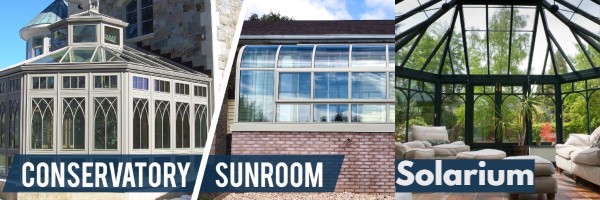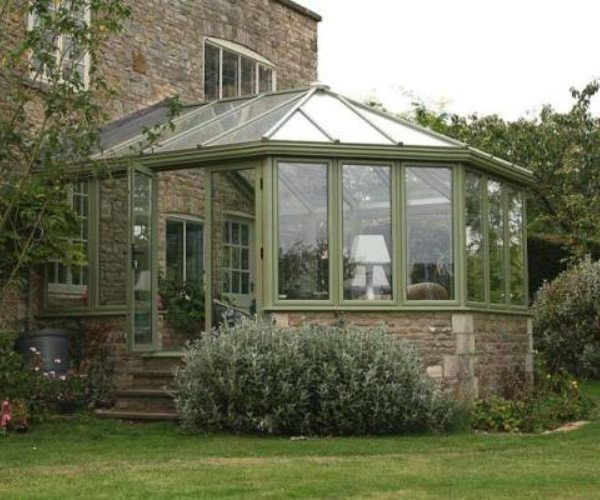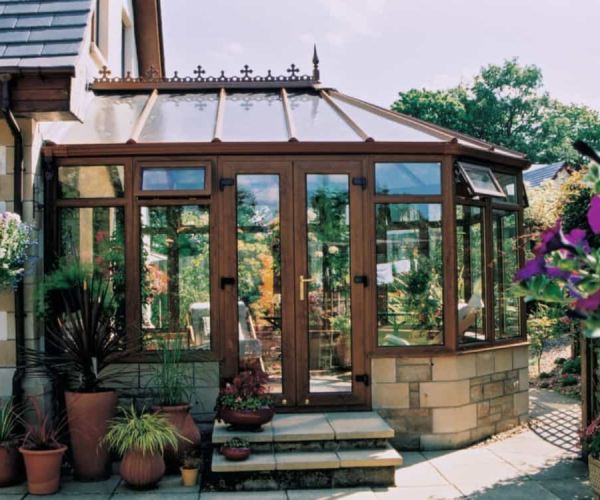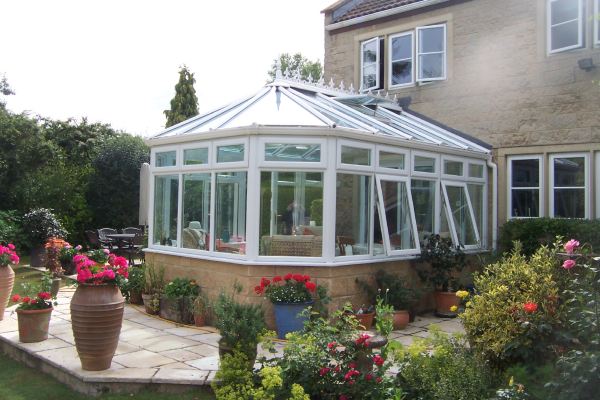Conservatories, Sunrooms, and Solariums are common architectural concepts that integrate indoor and outdoor spaces to assist homeowners get closer to nature. However, these three differ significantly in terms of intended function, structural design, materials, and degree of integration with the main house.
Let’s get into the details of how conservatories stand out from sunrooms and solarium.
How Do Conservatories Differ From Sunrooms and Solariums?
Conservatories value historical significance, delicate architecture, and horticultural connections, whereas sunrooms and solariums emphasize modern design and versatile living spaces. Sunrooms provide useable living spaces with a comfortable atmosphere, while solariums immerse you in nature through extensive glass surfaces.

Concepts
- Conservatories: Conservatories are intended not just to extend living space but also emphasize botany, which creates a unique combination of greenhouse and living area. An architect designs a conservatory with a glass roof and walls to create an ideal environment for year-round plant growth.
- Sunrooms: Sunrooms are typically designed to provide relaxation and views of the surrounding area. It primarily serves as additional living areas for homes, usable year-round because they are typically heated and cooled just like the rest of the home.
- Solariums: Solarium features all-glass walls and roofs. This design ensures a clear view of the sky and the outdoors, making it an ideal spot for those who cherish the beauty of the night sky and nature.
Architectural Style
- Conservatories: Conservatories have more sophisticated architectural designs than sunrooms or solariums, with Victorian or Edwardian styles that offer a traditional touch to modern residences. These structures are usually made with a heavy reliance on aluminum or wood frames to support the glass, ensuring a sturdy framework suitable for housing plant life.
- Sunrooms: Although translucent roofing materials are sometimes used for sunrooms, this structure can have a more traditional roof and often integrates more naturally with the original home’s architectural style. Sunrooms have been built into the living area of the house by using large windows that bring in natural light. They may also have better-insulated glass and frames to help with energy efficiency.
- Solariums: Solariums, with their glass-paneled roofs, provide an eye-catching visual and functional experience to people along with natural light and warmth. This structure is perfect for winter, however it may take more energy to heat and cool effectively. It offers high-quality, UV-resistant glass to protect against the sun’s rays while maintaining a comfortable environment and stunning views.
Aesthetic Enhancement
- Conservatories: Conservatories enhance the visual appeal of your house’s architecture in addition to providing a practical space. The space can be used for a variety of purposes such as a classy venue for social events or a peaceful place to read and unwind.
- Sunrooms: Sunrooms are designed to be versatile, functioning as family rooms, eating areas, or even home offices. They are fully equipped with electrical outlets and climate control.
- Solariums: Solariums are considered to be opulent spaces for leisure, perfect for peaceful times, working out, or just enjoying the natural sunlight, all the while keeping a profound connection with nature.

Property Value
Conservatories are more highly prioritized as residential infrastructure than sunrooms and solariums. These constructions offer both aesthetic appeal as well as functional living space, which usually increases their market appeal and resale value. Homeowners who invest in conservatories may receive a return on investment in the form of higher home values.
Things to consider while adding a conservatory to your home
Adding a conservatory to your home increases your property’s aesthetic appeal along with enhancing its value. To ensure that a conservatory in your home meets your needs and improves your space, several important factors need to be studied before construction.
Here are some main points you need to learn to enhance your living space effectively.
Purpose and Use
First and foremost, it is very important to determine how you intend to use the conservatory. Conservatories are versatile in that you can use the space for multiple purposes, from a tranquil space for reading and relaxation to an elegant setting for social gatherings.
Similarly, you get a beautiful and beneficial plant-packed space with a conservatory, as it is eco-friendly.
Location
Another factor to be studied while constructing a conservatory is location. Choose a suitable area that receives ample sunlight throughout the day and looks good with the rest of your house.
Design and Style
When selecting a design and style for your conservatory, consider a combination of aesthetics and durability. This helps to enhance the potential value of your property. Similarly, choose high-quality materials such as aluminum, uPVC, or timber frames, along with toughened or laminated glass for enhanced security and longevity.

Planning Permission
Although many conservatories don’t need planning permission, it’s important to verify if there are any local regulations. If so, ensure you secure the required planning permission or building permits before beginning construction. Planning permission will vary by conservatory location and may have regulations on size, height, and placement.
Energy Efficiency
Conservatories feature advanced glass technology such as double or triple glazing, insulated frames, and stuff that stops heat from escaping, which helps keep your place warm or cool when you need it. Go for these energy-saving options to keep your house temperature consistent.
Maintenance
Remember to consider the maintenance of the conservatory including cleaning, sealing, and upkeep of structural components, glass panels, and hardware.
Budget
Lastly, set a budget for the entire conservatory project, accounting for construction expenses, materials, necessary permits, and optional enhancements or improvements. If you don’t specify a realistic budget from the start then it can lead to unforeseen expenses.
Frequently Asked Question
1. What is the purpose of a conservatory?
Adding conservatories not just to extend living space, but also to provide a nurturing environment for plants, combining horticultural and architectural splendor.
2. What should you consider building a conservatory?
Adding a conservatory to your home increases your property’s aesthetic appeal along with enhancing its value.
3. What is the difference between Conservatories, Sunrooms, and Solariums?
Conservatories value historical significance, delicate architecture, and horticultural connections, whereas sunrooms and solariums emphasize modern design and versatile living spaces.
4. What are the key features of a conservatory that make it stand out?
Conservatories have more sophisticated architectural designs than sunrooms or solariums, with Victorian or Edwardian styles that offer a traditional touch to modern residences.
5. Can Conservatories be year-round usage?
Yes, Conservatories are usually made with a heavy reliance on aluminum or wood frames to support the glass, enabling year-round usage.
Also read, Top 5 Must-Do Home Maintenance Tasks for First-Time Buyers
